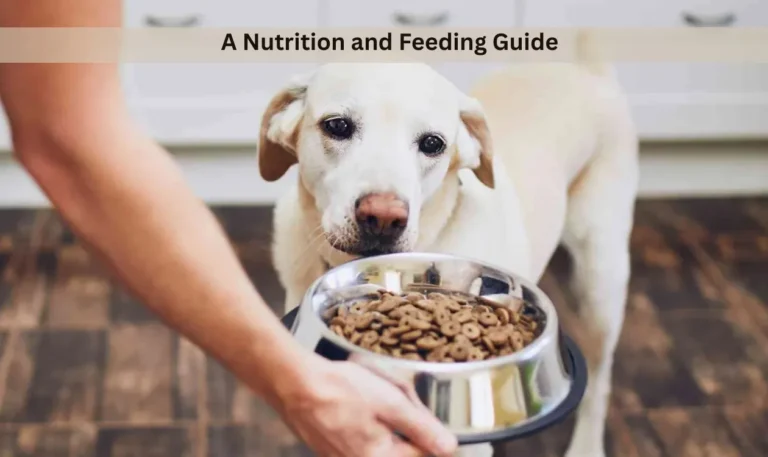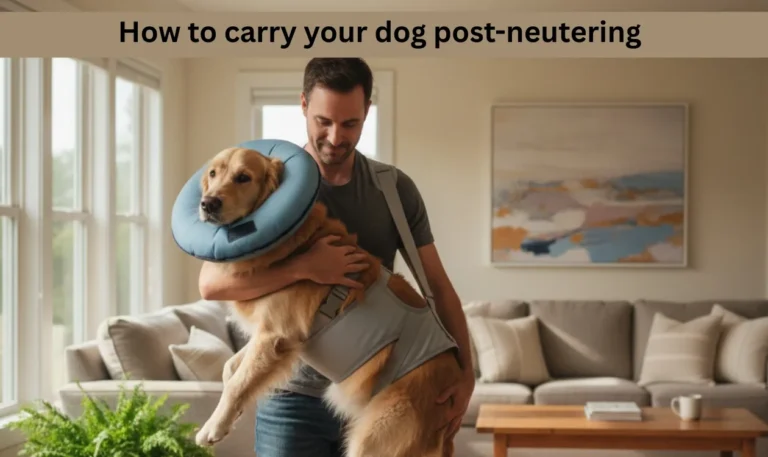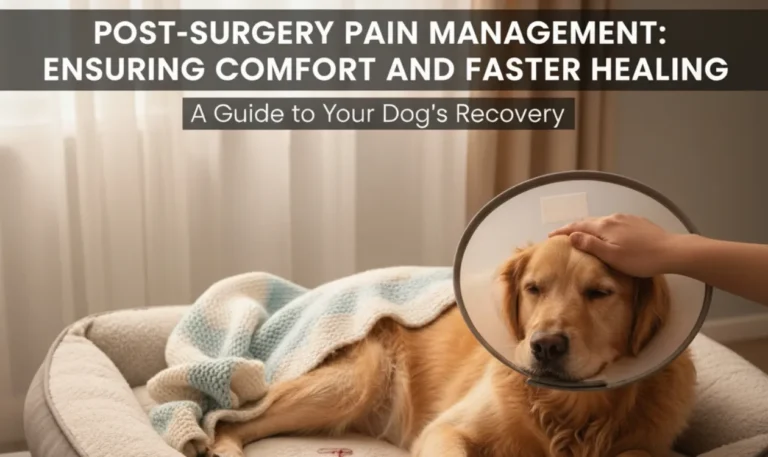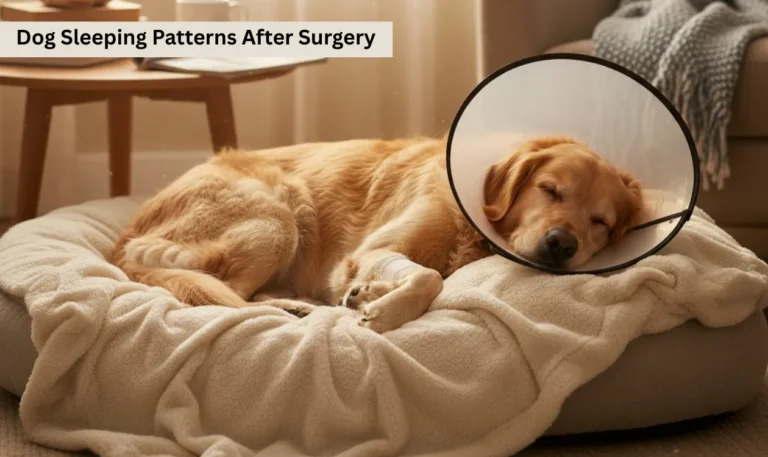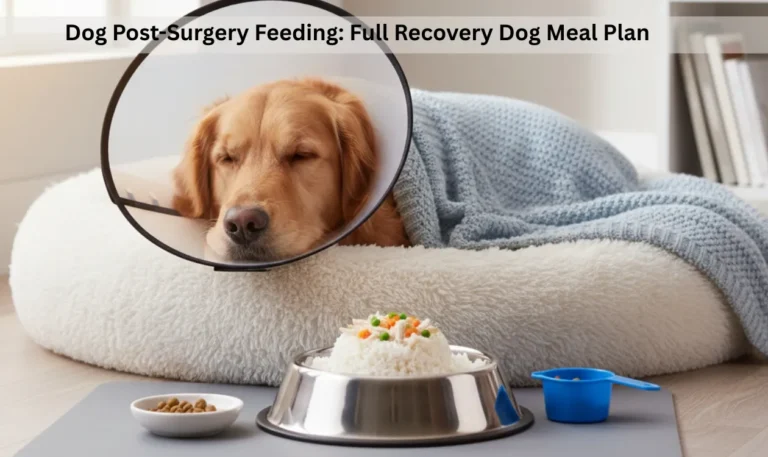Knowing the Right Time to Remove the Cone After Neutering
Learn when to remove the cone after neutering, signs your dog is ready, and dog care tips for comfort to ensure safe healing and a smooth post-surgery recovery.
One of the major worries of pet owners after their dog has been neutered is deciding when to take off the protective cone. This simple yet essential tool—commonly known as an Elizabethan collar—plays a vital role in dog care by preventing your pet from licking or biting the incision. However, keeping it on too long can cause discomfort or anxiety.
The key to proper dog care after surgery lies in finding the perfect balance between protection and comfort. Removing the cone too early can expose your dog to infection, while leaving it on too long may lead to stress. Understanding the right timing and providing gentle, attentive dog care ensures your furry friend heals safely and stays happy throughout recovery.
Why Dogs Need the Cone After Neutering
The cone will ensure that your dog cannot reach the surgical area and lick or scratch it or bite it. Apparently, licking is not so bad but a dogs mouth is full of bacteria that can lead to infections and slow healing. The cone makes the wound remain clean and undisturbed.
It also ensures that the stitches are not torn open and this might need another surgery to be replaced as well. The cone must remain in place according to the time specified in order to get the incision to close and repair. It is a minimal yet effective device that prevent complications of the post-surgery.
Normal Schedule of cone removal.
Majority of the vets advise that the cone should be kept on between 10 to 14 days following neutering. This is a time during which the incision will be fully healed eliminating chances of infection. There are dogs who might recover sooner however it is better to wait until your own vet declares that it is safe to take off the cone.
The time of healing is not exactly the same as the time of healing of any dog based on its age, size and health state. Being around your dog daily will enable you to know when they are ready. Always ensure you do not pull out the cone prematurely without the approval of your vet despite the fact that your dog may be okay.
Signs Your Dog Is Ready for Cone Removal

Prior to the removal of the cone, ensure that the incision appears clean, dry and closed. No redness, swelling or discharge of the wound. These are good indications that recovery is underway.
In addition, make sure that your dog does not show interest in licking or biting the field anymore. Indeed, although they are likely to be safe, it is probably safe to remove the cone when they are calm and do not bother the incision. A speedy vet visit can verify the progress on the healing of a dog.
When Not to Remove the Cone Yet
Do not remove the cone in case you notice that there is redness, blood, or swelling in that area of the incision. This may be symptoms of infection or infection that is not quite healed. The premature removal of the cone might result in reopening wound by licking.
Moreover, in case your dog constantly attempts to touch the opening when the cone is removed, it denotes that he or she is in need of it. Ask your vet in case you are in doubt. An additional few days in the cone are much better than the threat of an unpleasant infection.
Making the Cone More Comfortable
A lot of dogs are frustrated as they knock on furniture or have difficulties with eating cones at the beginning. You can contribute by lifting food and water bowls a little so that it becomes easy to eat. Maintain clear paths and provide the dog with easy instructions as he/she moves about.
When the plastic cone seems to be too rough, it is better to use a soft material or an inflatable cone. These options are comfortable, and they offer protection. Always make sure the cone is fitting correctly, it has to be tight but not too tight on the neck of your dog.
Other substitutes to Cones that are Traditional
Other pet owners make use of recovery suits. These body suits completely cover the incision area giving the person more movement but not allowing licking. They come in handy especially with small dogs or those which do not feel comfortable with cones.
Another widely used one is inflatable collars. They do not stop the movement of the neck entirely, but only partially reduce vision or movement. Not every dog is able to use them, however, they can still access the incision with some body shapes. Always consult your veterinarian before changing.
Post-Cone Care Tips
After removing the cone, give a close attention to your dog during a few days. Be sure that they do not lick or scratch the part. In case they should take any renewed interest, you may have to reattach the cone in the meantime.
Keep the area of incision dry and clean and do not take baths until you are checked up by your vet. Restrictively resume normal activities of your dog, play and walks. Even the slightest changes are tracked to be sure that the process of regaining your dog is smooth and free.
FAQs : Knowing the Right Time to Remove the Cone After Neutering
Final Thoughts
The timing and observation is all that is required to know when to remove the cone after neutering. On the one hand, it is easy to be infected when it is removed prematurely, and on the other hand, it may be difficult to take it out of the premises when it is removed too late. Medical advice should always be adhered to and it is important to look at visual indication of healing before removing it.
It is the patience and attention you extend to your dog that will determine the comfort and wellbeing of your dog. When the cone has been removed and the incision is closed, your furry friend can be his/her playful and happy self, ready to be cuddled, taken on walks and have a new, healthy life.

